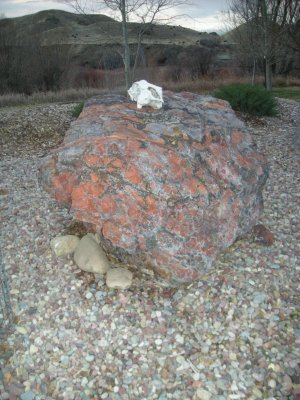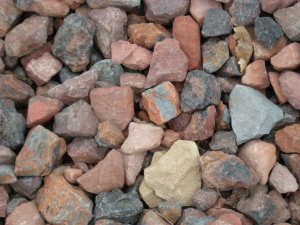![]() November 18, 2007
November 18, 2007
Sunday
Describe your relationship with the earth. Freewrite for as long as it takes you to get to the truth. When you get there, solidify the idea with a specific image.
             — Laraine Herring, b. 1968
                 American writer and teacherÂ
                  in Writing Begins with the Breath, a book on the writing process
Laraine Herring appears to have a lot of confidence in her readers’ ability to write toward the truth and arrive there quickly. I’ve been considering my relationship with the earth for some time, and if I know anything, I know that it is haphazard, even estranged sometimes. In a lecture at Bread Loaf this summer, Scott Sanders talked about how most of us know what the network television schedule is tonight but not what phase the moon is in. Oddly enough, I don’t know what the network television schedule is tonight because we don’t have it here. But I can tell you that the moon, which is traversing the view from my studio window as I write, is a waxing gibbous moon at 63% of full.
When I am away from home I tend to pay particular attention to the landscape. Wyoming is so dramatically different from home and from the increasingly-familiar Vermont that it would be next to impossible not to spend time getting to know it, letting it speak to me and teach me.
The two things that I am irresistibly drawn to in any landscape are the trees and the rocks. The trees here in the high plains are different from those in the deciduous forest area I come from. The rocks, too, seem exotic when compared with the limestone and brownstone quarried near where I live.

At left is an example of clinker rock, or scoria, plentiful in this area of Wyoming. It is the result of coal outcrops burning from spontaneous combustion or wildfires. The clinker is actually the hardened claystones, siltstones, and sandstones above or below the coal strata that baked during the burning of the coal. It’s among the hardest materials found locally and is used a lot in grading dirt roads. I saw it from the air on Thursday, bands of reddish dirt spiking off the paved regular roads like blood vessels. The specimen at left is a boulder hauled in as a landscape accent (and topped with a bleached bovine skull). But the private roads on the Jentel property are covered with small pieces of the stuff.
I took a walk this morning. You have to look down a lot when you’re walking here, since the cattle move freely about the thousand acres upon which Jentel is situated. The chips of clinker on the roadway are red streaked with blue gray or even a dull turquoise. I stopped to pick one up, to take back to my studio as a talisman, a piece of this earth that will bless my coming in and sitting down and going out again as I move through these thirty days.
And I left a rock behind. After I’d chosen the talisman rock I walked a little farther, and my eye was once again drawn to a particular piece lying among so many similar pieces. It was almost square, with a wide band of blue between two bands of a lighter, nearly orange red. I reached for it, and then let it lie. Two rocks caught my attention. I chose one to keep, and one to leave.
The work I am doing here is all about choices. How do I shape my narrative? What, indeed, am I trying to do with it? Shall I set it aside when the human truths I am exploring tear at my heart, and craft instead pleasant descriptions of the beautiful house I am living in or amusing anecdotes about my housemates?
The rock not taken might make all the difference.

To be included on the notify list, e-mail me:
margaretdeangelis [at] gmail [dot] com (replace the brackets with @ and a period)